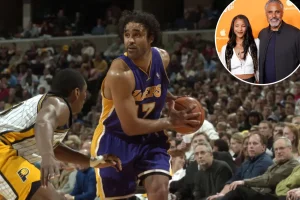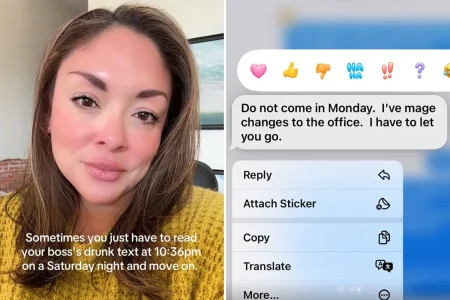BRIDGING THE GENERATION GAP: MILLENNIAL BOOTCAMP AND THE SHARED STRUGGLES OF YOUNG ADULTS
In a world where social media reigns supreme and cultural trends evolve at lightning speed, the generational divide between Millennials and Gen Z has become increasingly apparent. A bold Gen Z TikToker named Janelle Fuhrare has taken it upon herself to educate her millennial predecessors on the dos and don’ts of contemporary social etiquette through what she calls “millennial bootcamp.” Her viral video, which has garnered nearly 700,000 views, showcases the sometimes humorous, sometimes cringe-worthy behaviors that immediately mark someone as being born between 1981 and 1996. From ankle socks to peace signs in photos to the notorious “millennial pause” when recording videos, these subtle tells have become the subject of gentle mockery from the younger generation. While her approach might seem confrontational with the opening line, “I think it’s time somebody starts the series called ‘millennial bootcamp’ where I, a Gen Z, tell you what we’re doing, what we’re not doing, social media etiquette,” it reveals something deeper about our need to connect across generational lines.
Among Fuhrare’s primary concerns is the apparent millennial sin of using outdated fonts on Instagram. “These are absolute nos. I hate them so much, there’s no reason why you should be using these,” she declares with the confidence only youth can provide. Beyond typography, she offers guidance on evolving slang, noting that saying “slay” verbally is now passé unless used sarcastically. Instead, she demonstrates the new way to express approval: a simple gesture of tapping two fingers together while nodding. This linguistic evolution extends to phrases like “I’m dead,” “I’m deceased,” “I’m sick,” “I’m screaming,” and “I’m throwing up” – all of which have received the Gen Z stamp of approval as appropriate ways to compliment someone’s appearance. These nuanced changes in communication styles highlight how quickly language transforms in the digital age, creating potential disconnects between generations separated by just a decade or two.
The response from millennials to this unsolicited coaching has been mixed, with many firing back with the confidence of a generation that pioneered much of today’s social media landscape. Some responded with good humor, taking mental notes on the changing cultural norms, while others defended their generational identity with comments like, “Social media etiquette?!? Girlfriend, we are the creators of social media.” The pushback continued with pragmatic observations such as, “Gurl we’re 40 we’re too tired to care about FONTS,” and the accusatory, “Gen Z is so obsessed with us.” Perhaps the most pointed response channeled Kim Kardashian’s famous meme: “The fact that Gen Z thinks we care about this kind of stuff… like Kim, there’s people dying…” These retorts reveal a generation that, while sometimes bemused by their younger counterparts’ critiques, is comfortable enough in their own identity to brush off concerns about appearing dated or uncool through their online behavior.
What makes this generational sparring particularly interesting is that despite their apparent differences in social media habits and linguistic preferences, both millennials and Gen Z share significant common ground in their economic reality. The playful banter about fonts and slang obscures a more sobering truth: neither generation can comfortably afford the social lives they’re trying to maintain. Financial strain has become a defining characteristic for young adults across both generational cohorts, creating an unexpected bond between the supposedly divided groups. The economic challenges facing those in their twenties and thirties transcend the superficial cultural markers that might otherwise separate them, suggesting that perhaps these social media squabbles serve partly as a distraction from more pressing concerns about financial stability, housing affordability, and economic security.
Despite their financial limitations, research shows that both generations continue to prioritize in-person connections, often at the expense of their financial goals. “The Friendship Tab” survey, commissioned by Ally Financial, revealed that while three out of five young adults acknowledge that social spending affects their financial objectives, a significant 69% still make weekly in-person connections with friends a priority. This statistic illuminates a poignant reality: in an era where digital communication dominates and economic pressures mount, the human need for face-to-face interaction remains paramount. Young adults across both generations are making conscious choices to invest in relationships even when their budgets suggest they shouldn’t, demonstrating that some values transcend both generational identity and financial prudence.
Perhaps what this exchange between millennials and Gen Z ultimately reveals is not so much the differences between them but the universal experience of generational transition. Every generation faces critique from those who come after, just as every generation struggles to adapt to changing cultural norms while maintaining their authentic identity. The millennial response to Gen Z criticism mirrors how Baby Boomers and Gen X responded to millennial critiques years earlier. And beneath the surface-level disputes about fonts and slang lies a shared experience of navigating adulthood in challenging economic times. As both generations continue to interact, compete, and collaborate in workplaces and social spaces, they may find that their common struggles with affordability, mental health, climate anxiety, and economic uncertainty create stronger bonds than their disagreements about Instagram aesthetics could ever sever. In this context, Fuhrare’s “millennial bootcamp” might be less about correcting the older generation and more about building bridges through humor and mutual understanding in a rapidly changing digital landscape.















